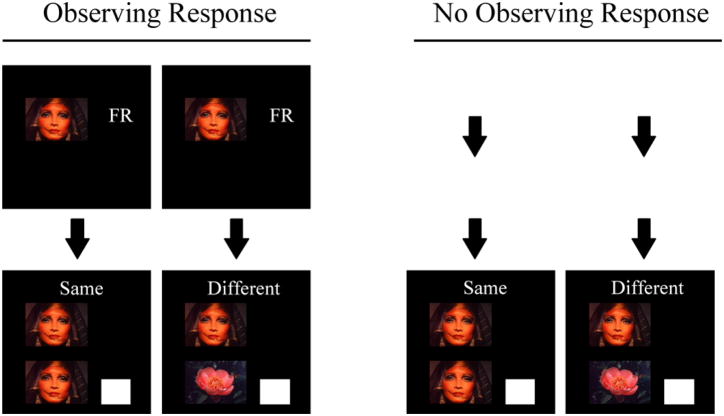Figure 3.
Examples of a two-item same and different display used with capuchin monkeys, rhesus monkeys, and pigeons. The examples are proportional to the actual displays. The display sizes were smaller for pigeons to equate visual angle across species. Rhesus monkeys and pigeons were required to first make observing responses (touches or pecks) to the upper picture before they were presented simultaneously the two pictures and white rectangle permitting a choice (left panel). Capuchin monkeys were not required to make this initial observing response requirement (right panel). In either procedure, a touch or peck to the lower picture was correct on same trials and a touch or peck to the white rectangle was correct on different trials. After a choice response, displays were extinguished, correct choices rewarded, and a 15-s intertrial interval separated trials. Thus, except for the initial observing response, the sequence of events was identical across species. Note. From Figure 1, “Mechanisms of same/different abstract-concept learning by rhesus monkeys (Macaca mulatta),” by J. S. Katz, A. A. Wright, and J. Bachevalier, 2002, Journal of Experimental Psychology: Animal Behavior Processes, 28, p. 361. Copyright 2002 by the American Psychological Association. Adapted with permission.

